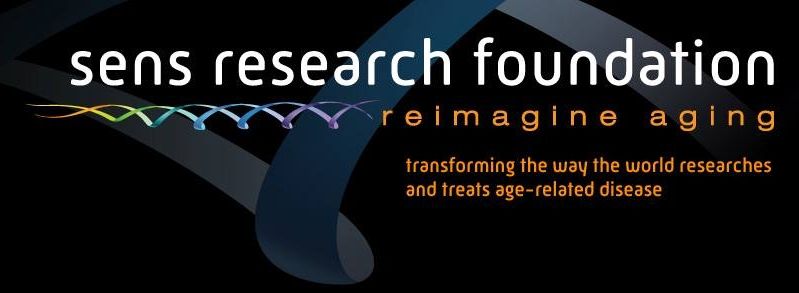Two separate experiments at the Large Hadron Collider at the European Organisation for Nuclear Research, on the French-Swiss border, appear to confirm the existence of a subatomic particle, the Madala boson, that for the first time could shed light on one of the great mysteries of the universe — dark matter.
The SENS Research Foundation has finally published this anticipated and important paper on mitochondrial gene transfer which has ramifications for mitochondrial diseases and more importantly one of the processes of aging. It is great to see that finally after a decade of criticism Aubrey de Grey has proven his approach is viable.
We explore the possibility of re-engineering mitochondrial genes and expressing them from the nucleus as an approach to rescue defects arising from mitochondrial DNA mutations. We have used a patient cybrid cell line with a single point mutation in the overlap region of the ATP8 and ATP6 genes of the human mitochondrial genome. These cells are null for the ATP8 protein, have significantly lowered ATP6 protein levels and no Complex V function. Nuclear expression of only the ATP8 gene with the ATP5G1 mitochondrial targeting sequence appended restored viability on Krebs cycle substrates and ATP synthesis capabilities but, failed to restore ATP hydrolysis and was insensitive to various inhibitors of oxidative phosphorylation. Co-expressing both ATP8 and ATP6 genes under similar conditions resulted in stable protein expression leading to successful integration into Complex V of the oxidative phosphorylation machinery. Tests for ATP hydrolysis / synthesis, oxygen consumption, glycolytic metabolism and viability all indicate a significant functional rescue of the mutant phenotype (including re-assembly of Complex V) following stable co-expression of ATP8 and ATP6. Thus, we report the stable allotopic expression, import and function of two mitochondria encoded genes, ATP8 and ATP6, resulting in simultaneous rescue of the loss of both mitochondrial proteins.
Computadores qu nticos estão chegando. O mundo pode não estar pronto.
A mec nica qu ntica, Carl Sagan observou certa vez, é tão estranho que o “senso comum é quase inútil em se aproximar dela.” Os cientistas ainda não entendem exatamente por que a matéria se comporta como faz no nível qu ntico. No entanto, eles estão ficando melhor a exploração dos seus din mica peculiar — de maneiras que podem em breve revolucionando o negócio tecnoloco.
Não é surpresa, então, o investimento no campo está crescendo. IBM, Microsoft e Google são todos construção de laboratórios de pesquisa qu ntica. Startups estão se preparando. Os bancos estão muito interessados na verdade. Governos ver aplicações para a exploração espacial, a investigação médica e de coleta de inteligência. Agência de Segurança Nacional dos Estados Unidos, na verdade, foi discretamente tentando construir um computador qu ntico, durante anos, na esperança de que ele iria fazer um código-breaker imparável.
Via Bloomberg.
For cancer research, meanwhile, the situation is more akin to an economic revolution, or disruptive advance in technology. Because all cancers must lengthen their telomeres, and because telomere lengthening is governed by a small number of processes, there is the opportunity to change the focus of cancer research from an endless procession of expensive new therapies, each targeting a tiny number of the hundreds of subtypes of cancer, to one single therapy that can effectively suppress all cancers.
The last few days have arrived for this year’s SENS Research Foundation crowdfunding campaign, focused on important groundwork to establish a universal therapy for all types of cancer. There are still a few thousand dollars left in the matching fund, so donations are still being matched. Cancer is just as much a part of aging that must be ended, brought completely under control, as all of the other line items in the SENS rejuvenation research portfolio, and this year is the first time that the SENS Research Foundation has run a fundraiser for this program.
Hopefully there is no need to remind the audience here that the SENS Research Foundation, and important ally the Methuselah Foundation, have in recent years achieved great progress in the field of rejuvenation research on the basis of our donations and our support. Some of the high points you’ll find mentioned here and there at Fight Aging!: support and ongoing expansion of the mitochondrial repair technologies now under development at Gensight; seed funding Oisin Biotechnologies for senescent cell clearance; unblocking efforts to clear glucosepane cross-links that stiffen tissues; running the lauded Rejuvenation Biotechnology conferences; and many more. If only all charities produced as great an impact with as few resources — and if only we were further along in the bootstrapping of an industry focused on the development of rejuvenation therapies.
Autonomous Solutions Incorporated has revealed Case IH – the concept robo-tractor at The Farm Progress Show – showing off its nifty extras including cameras, radar and sensors that allow the farmer to control the tractor remotely using a tablet.
Ross, the world’s first artificially intelligent attorney, has its first official law firm. Baker & Hostetler announced that they will be employing Ross for its bankruptcy practice, currently comprised of almost 50 lawyers.
Law firm Baker & Hostetler has announced that they are employing IBM’s AI Ross to handle their bankruptcy practice, which at the moment consists of nearly 50 lawyers. According to CEO and co-founder Andrew Arruda, other firms have also signed licenses with Ross, and they will also be making announcements shortly.
Ross, “the world’s first artificially intelligent attorney” built on IBM’s cognitive computer Watson, was designed to read and understand language, postulate hypotheses when asked questions, research, and then generate responses (along with references and citations) to back up its conclusions. Ross also learns from experience, gaining speed and knowledge the more you interact with it.
European and American scientists discover a star that may possibly be orbited by alien megastructures.

As part of its new plan to build 2 to 3 million all-electric cars a year and unveil 30 new models by 2025, Volkswagen announced that they plan to debut one of these 30 new electric car models at the Paris Motor show next month.
VW CEO Hebert Diess confirmed the news in an interview with German magazine Wirtschafts Woche.
He said that the vehicle will achieve a range of 400 to 600 km (248 to 372 miles), but he could have been referring to the New European Driving Cycle (NEDC), which is much more forgiving than the EPA rating and doesn’t really reflect real-world range, but a range of ~300 miles sounds likely.
Flooding of Coast, Caused
Posted in transportation
Five hundred miles down the Atlantic Coast, the only road to Tybee Island, Ga., is disappearing beneath the sea several times a year, cutting the town off from the mainland.
And another 500 miles on, in Fort Lauderdale, Fla., increased tidal flooding is forcing the city to spend millions fixing battered roads and drains — and, at times, to send out giant vacuum trucks to suck saltwater off the streets.
Scientists’ warnings that the rise of the sea would eventually imperil the United States’ coastline are no longer theoretical.
By JUSTIN GILLIS SEPT. 3, 2016









